5 Invaluable Life Lessons From the Garden
In 2003 I moved into a townhome, and my visiting mother took me to a nursery to “spruce up” my 60-square-foot patio area. Four years of tinkering had led me to take the plunge — moving into a new house with over 1,500 square feet (about 140 square meters) of landscape, even though I knew hardly anything about gardening. Scary or invigorating? Silly or smart? The difference can often be a fine line.
One of the harder aspects in life is beginning something, but it’s in the moments of greatest risk and faith, with or without planning, that we truly find ourselves. Here’s my encouragement to help you leap and find your life in the process of garden making. After all, gardening is not discovering that the mystery of life is out there somewhere, it’s discovering that the mystery is right inside us — how we work in, for and with the natural world.
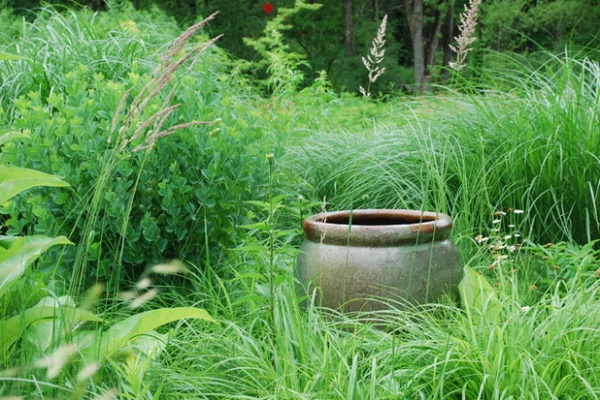
1. You can accept failure — and embrace it. You can’t mess up in the garden. You just can’t. As in writing, where the real writing happens in drafting and editing, or in marriage, where deeper love comes through selflessness and forgiveness, in the landscape real gardening happens over time.
Most of us perceive hiccups as brutal errors, but a gardener sees them as opportunities and joys. Many entrepreneurs say failure is the greatest learning experience, and it’s too bad our culture (or species) thrives on thinking that a step back is not progress. Life is too short. “Why do we fall?” asks Thomas Wayne, Batman’s father. “So we can pick ourselves up again.” Go plant something. Get that shovel working.
Shown: Maiden grass (Miscanthus sp.) in James Golden’s New American garden in New Jersey
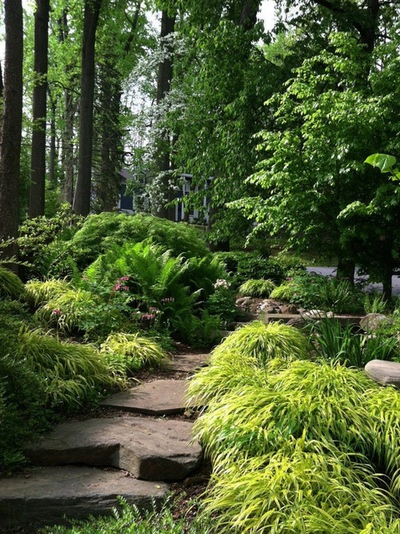
2. Experimentation is the goal, not the means. Sure, there is an art to designing a garden, and sometimes you’ll want a professional to help guide you, while other times you’ll be ready to dive in on your own. It’s a hard lesson learning how fast wild senna grows, how big it can get and how it can shade out all the lovelies you planted around it. That bluestem and milkweed combo you were so keen on last year looks atrocious this year. That waterfall you spent weeks building? It’s leaking; it’s falling apart; it’s filled with neighborhood dogs; it’s just wrong. What’s great about life? It’s never finished — even when you are. Such is the garden.
Shown (click photo to see the plants tagged): Golden Japanese forest grass (Hakonechloa macra ‘Aureola’), cinnamon fern (Osmunda cinnamomea), Persian ironwood (Parrotia persica), cutleaf Japanese maple (Acer dissectum)
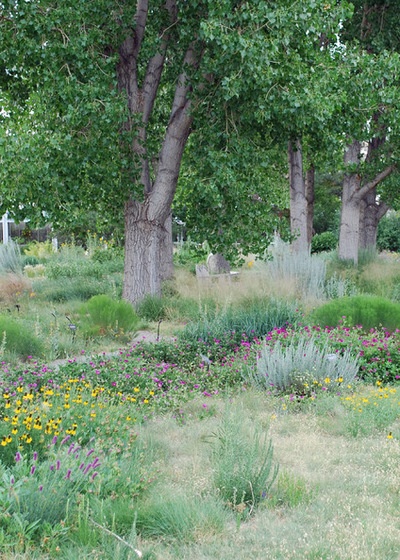
3. Plants die, creating space for a new plant. I used to write journal entries waxing poetic about the loss of a plant over the winter — it was like losing a pet or, sometimes, all direction in life. I’d even look back over photos I took of the plant as if holding a vigil.
Now I am absolutely giddy when a new space opens up. I have so many plants crammed in, all jockeying for position and resources (a good thing in a garden that tries to replicate wild nature), that a new hole is an opportunity, like new love. Of course, I’m often beaten to the punch by opportunistic plants, who also see the vacancy as a gold mine. So what’s a gardener to do? Make a bigger garden. Rip up the grass. Or rip out the invading seedlings even if you love them — it’s OK to trash some plants now and then. Tough love works.
Shown: Purple prairie clover (Dalea purpurea) in a mixed planting at the Denver Botanic Gardens
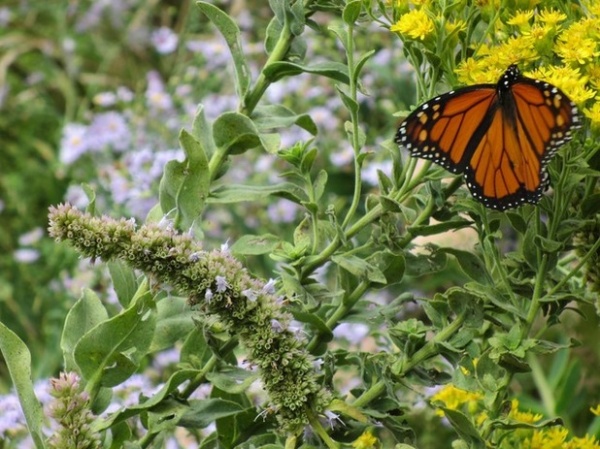
4. Purpose and understanding come from reading and listening. There’s no substitute for learning in your space — the soil, light, drainage and microclimates are unique. You have to become intimate with your home over time, and the icing on the cake is that doing so stokes your endorphins, creates a sense of well-being and fosters a general perception that you can make a difference in life and are not disconnected from nature.
Even though there’s no substitute for doing, some of the best learning happens while reading books. Lots of books — books on plants, the history of garden design, architecture, philosophy, art, the science and ecology of plant communities and soil, climate change and more. Go to lectures on gardening. Watch podcasts. Read blogs. Ask questions of anyone and everyone you think knows more than you do — there is never a wrong question. Soon you’ll realize just how much you’ve upped the ante and how you’ve injected your garden with deep purpose and understanding.
Shown: Anise hyssop (Agastache foeniculum) in the foreground and stiff goldenrod (Oligoneuron rigidum) in the background
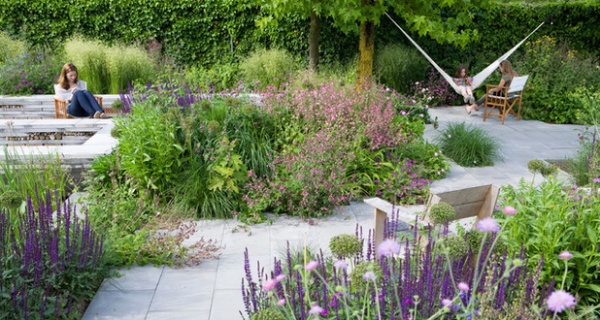
5. Joy and sorrow are the same teacher. More and more we’re coming to understand how interactions with nature — whether on hikes, sitting in parks or touching an animal — open us to a profound connection that heals and challenges us. When we see a butterfly struggling to fly from aster to goldenrod, missing a wing or two, there is both beauty (in the creature) and sorrow (in knowing its time has come).
And where there is joy and sorrow, there is purpose: Find out that butterfly’s host plant and get a couple. Strive to create a more diverse garden of blooms and specimens. Sit outside more, for longer periods. There’s a reason hospitals have healing gardens and elementary schools have curriculum-developed planting spaces. Don’t let the potential of seeing something “bad” in nature stop you from the innumerable benefits of being in it, of it and gardening more deeply. Take the risk to love what could vanish in a heartbeat; take the risk to garden passionately.
More
How I Learned to Be an Imperfect Gardener
Discover more ways to improve your garden












